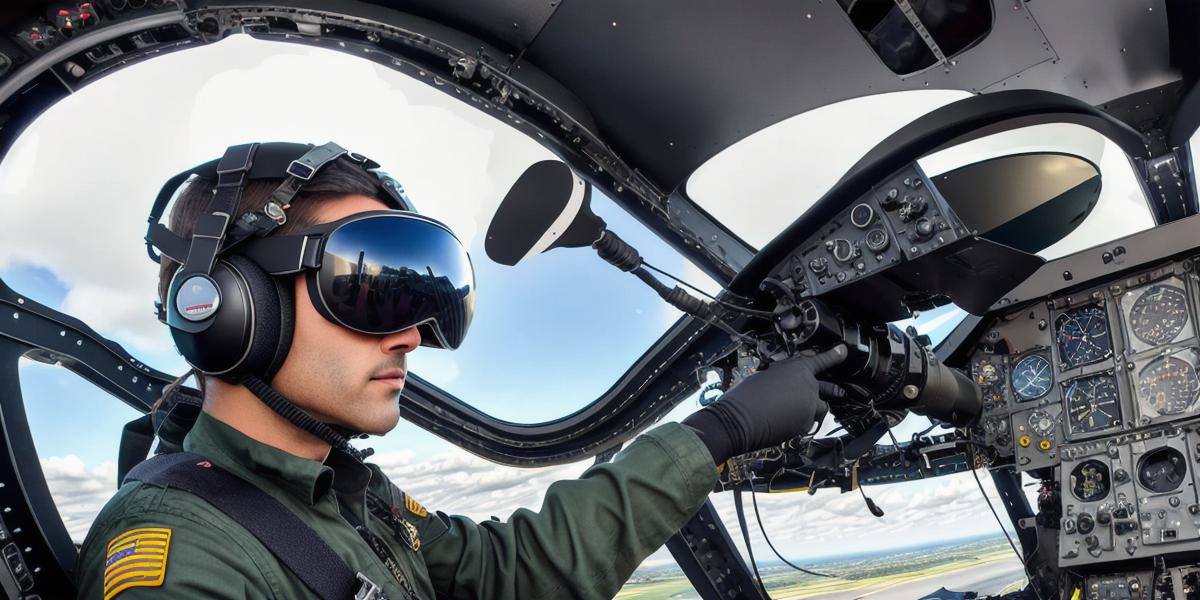Virtual reality flight simulators have revolutionized the way people experience aviation. With VR, you can take to the skies and experience the thrill of flying without leaving your living room. In this article, we’ll explore the world of virtual reality flight simulators and see how they’re changing the game for aviation enthusiasts and developers alike.
Virtual Reality Flight Simulators: What are They?
Virtual reality flight simulators allow users to experience the sensation of flying in a VR environment. These simulators can range from simple desktop applications to complex, immersive experiences that feel as close to the real thing as possible. Virtual reality flight simulators use a combination of sensors and advanced computer algorithms to create a realistic flying experience that engages the user’s senses and creates a sense of presence in the virtual world.
The Benefits of Virtual Reality Flight Simulators
Virtual reality flight simulators offer several benefits to users. They allow you to fly in a safe, controlled environment, which can be especially helpful for people who want to learn how to fly or practice their skills without the risk of injury or damage to property. Virtual reality flight simulators also provide an immersive experience that transports you to another world and allows you to explore new places and environments.
Virtual Reality Flight Simulators: How They Work
Virtual reality flight simulators work by tracking the user’s movements using sensors, such as motion controllers or cameras. This data is then used to create a realistic flying experience in the virtual world. The VR headset provides a visual representation of the virtual environment, while speakers and other audio cues create an immersive soundscape that enhances the overall experience.
Virtual Reality Flight Simulators: Real-Life Examples
There are many examples of virtual reality flight simulators in use today. For example, the military uses VR flight simulators to train pilots for real-world combat situations. Pilots can practice flying in a controlled environment and receive instant feedback on their performance. Virtual reality flight simulators are also used in aviation education programs, where students can learn about the principles of flight and gain practical experience without leaving the classroom.
Virtual Reality Flight Simulators: The Future of Aviation
The future of aviation looks bright thanks to virtual reality flight simulators. As technology continues to advance, we can expect to see even more immersive and realistic flying experiences. Virtual reality flight simulators will also continue to play an important role in aviation education and training, as they provide a safe and controlled environment for pilots to practice their skills and learn about the principles of flight.
FAQs
- Are virtual reality flight simulators as realistic as real-life flying?
- While virtual reality flight simulators are incredibly immersive and realistic, there will always be some limitations to the experience. However, advances in technology are allowing VR flight simulators to become increasingly realistic, and the gap between VR and real-life flying is closing rapidly.
- Can I use virtual reality flight simulators if I have motion sickness?
- Some people may experience motion sickness when using virtual reality flight simulators, but there are ways to reduce the risk. For example, you can adjust the sensitivity of the sensors or use anti-motion sickness medication before playing.
- What kind of equipment do I need to use virtual reality flight simulators?
- To use virtual reality flight simulators, you’ll need a VR headset, motion controllers or a camera, and a computer with the necessary software. Some virtual reality flight simulators may also require additional peripherals, such as a joystick or controller.
